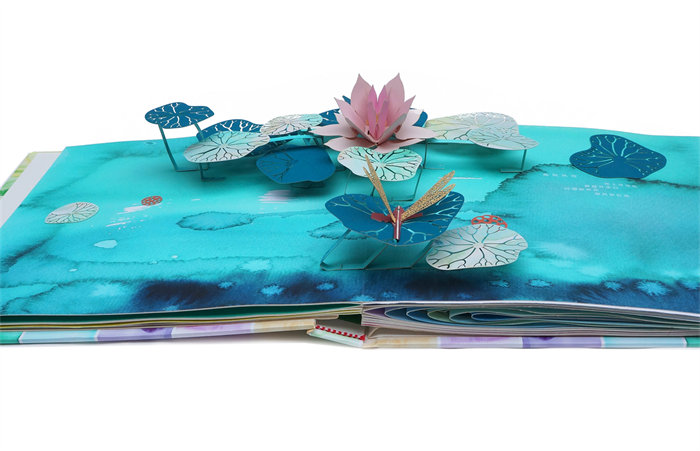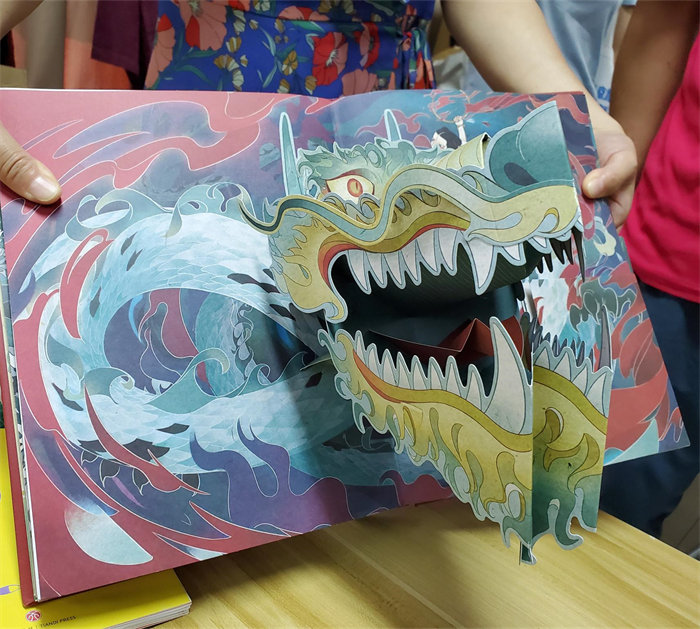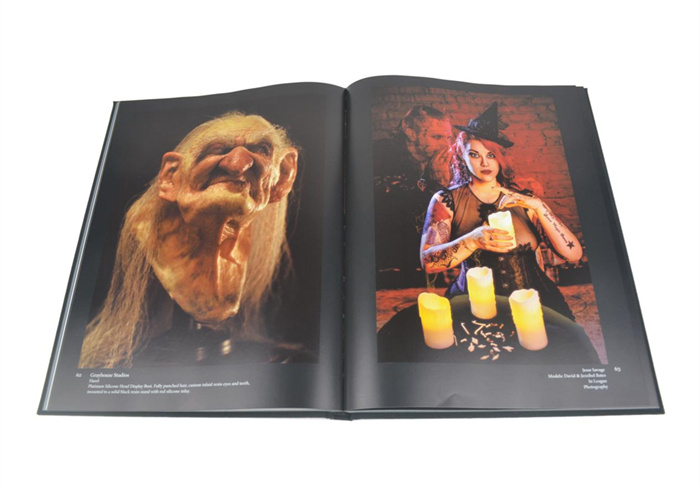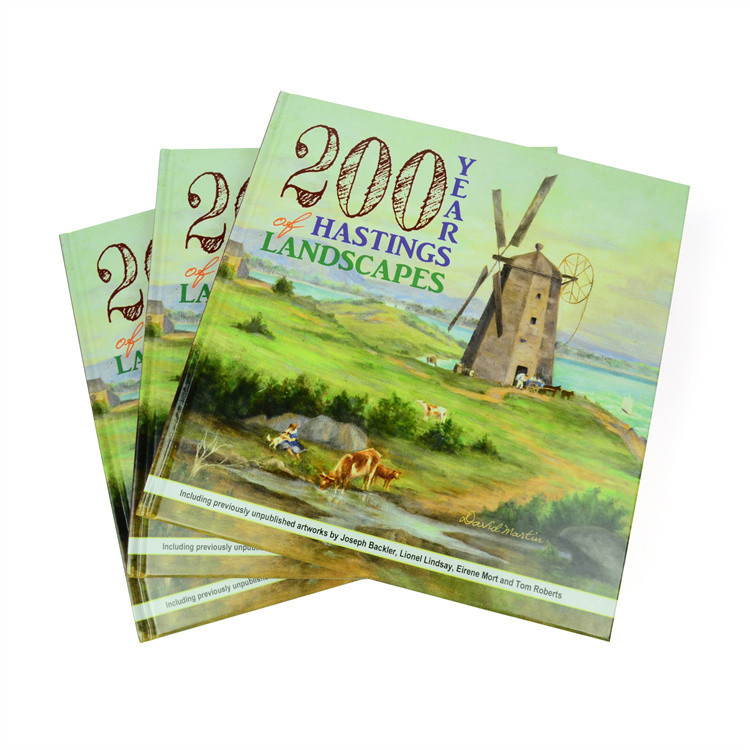fannyzeng's blog
Creating a custom pop-up book can be a fun and engaging way to showcase your artistic skills or tell a captivating story. Pop-up books are popular among children and adults alike, and can serve as a cherished keepsake or a unique gift. Here are some tips on designing, preparing, and printing a custom pop-up book that will make your creation stand out.

Designing a pop-up book requires creativity, imagination, and attention to detail. Start by sketching your book's layout and concept, and decide on the number of pages, size, and type of pop-up elements you want to include. With a clear plan in place, refine your sketches into detailed illustrations or diagrams that accurately represent your vision.
When designing your pop-up book, keep in mind the practicality of the pop-up designs. The pop-ups should be able to fold and stretch easily without damaging the pages or the pop-up elements. Use sturdy and durable materials, such as cardboard or heavy weight paper. To ensure your pop-up designs function correctly and last a long time. More tips refer this post.
2. Tips of preparing artwork for Pop-Up book printing
Before printing your pop-up book, make sure your artwork files are properly prepared for printing. First, convert all images and text to CMYK to maintain correct colors when printed. Second, check the resolution, bleed, and file format requirements for the printing company you choose to work with. A typical print resolution is 300dpi, and a bleed of 0.125 inches (3mm) is recommended for any artwork that extends to the edge of the page.
To ensure your pop-up designs are correctly folded and assembled into the book. Create a mock-up or prototype of your book using a template or a blank paper. This will help you refine your design and ensure that the pop-up elements work correctly when folded and assembled. Also, remember to include enough margin space between the pop-up elements and the edge of the page, to allow for safe assembly and folding.

3. Tips of Pop-up book printing and binding
The final stage of creating a custom pop-up book is printing and binding. Choose high-quality printing paper that is sturdy enough to hold the pop-up elements without tearing or bending. A thicker paper stock is recommended for pop-up books, with a weight of at least 100lb or more.
When choosing the size of a book, you need to consider the comfort of reader's hand and the reader's preference. Typically, a common pop-up book size is 6" x 8 ", 6” x 6”, 8” x 8”, 6” x 9”.
For the pop-up designs, use a technique called die-cutting to ensure the pop-up elements are clean, sharp, and accurately cut. Die-cutting involves using a cutting tool called a die that is custom made to your pop-up design specifications.
When it comes to binding, consider using a professional binding method that allows your book to lay flat when opened. Such as board book binding, or hardcover binding. A successful binding will not only ensure the longevity of your pop-up book but also enhance the user experience.
In conclusion, designing, preparing, and printing a custom pop-up book requires attention to detail, creativity, and a practical understanding of the medium. By following these tips, you can create a unique and attractive pop-up book that will captivate and delight your audience.
Hardcover VS paperback: understanding the differences and choosing the right book format for you.
When publishing a book, choosing the format is a crucial decision that can impact the book's success. The two most common book formats are hardcover and paperback. Although they both serve the same purpose, there are significant differences between the two. In this article, we will explore the differences between hardcover and paperback books and help you choose the best format for your book.
What's hardcover books?

Hardcover or hardback books, refer to books that have hard covers made of thick cardboard or stiff materials such as leather or cloth. The pages are bound together, and the spine is glued and sewn to the cover. The cover is often designed to be visually appealing and can be printed with graphics, text, and images.
What's paperback books?

Paperback books, or softcover books, are books with a flexible paper or soft cover. They are lightweight and easy to carry, making them popular for travel and casual reading. The cover is less durable than a hardcover, and the spine is glued rather than sewn.
Hardcover vs paperback: the real difference?
When it comes to book binding, there are two primary options: hardcover and paperback. The real difference between the two lies in the cover and binding method used.
Hardcover books, as the name suggests, have a hard cover made of sturdy material such as cardboard or leather,cloth. The pages are attached to the spine of the cover through a process called case binding. Which involves folding the pages into sections and sewing or gluing them to a reinforcement material (usually a strip of cloth). The cover is then wrapped around the finished pages, with the spine glued securely to the back of the cover. The result is a durable, long-lasting book that can withstand multiple readings and handling.
In contrast, paperback books have a soft cover made of a thin, flexible material such as paper or laminated cardstock. The pages are typically attached to the spine through a process called perfect binding. Which involves milling the edges of the pages and gluing them to the spine of the cover. This creates a smooth, uniform edge along the spine. Paperbacks printing are generally less expensive to produce than hardcovers. And paperbacks are easier to carry around due to their lighter weight and more flexible cover.
In summary, the real difference between hardcover and paperback books lies in the materials and binding method used to construct the cover. Hardcover books have a durable, long-lasting cover made of hard material. Paperback books have a lightweight, flexible cover made of soft material.
Pros and Cons of hardcover book

Hardcover books have been a staple of the book industry for centuries, and they continue to be a popular choice for readers and collectors alike. But, like any book format, hardcovers have both advantages and disadvantages.
Pros of hardcover book:
Durability: Hardcover books are known for their durability. This is because hardcovers are made with sturdier materials than softcovers, making them less prone to damage from wear and tear.
Aesthetics: Hardcover books are often seen as more aesthetically pleasing than softcovers. The hard exterior and dust jacket can be beautifully designed, adding to the overall appeal of the book.
Collectability: Hardcover books are often seen as more valuable to collectors. Especially if they are first editions or have a unique history or signature.
Protection: Hardcover books offer better protection for their pages than softcovers. The hard covers help to prevent damage from moisture, dust, and other potential hazards.
Cons of hardcover book:
Price:Due to the cost of hardcover book printing is higher than softcover, so hardcover books are often more expensive than their softcover counterparts. That making them less accessible to some readers.
Weight: Hardcover books are generally heavier than softcovers. That making them less portable and more difficult to hold for extended periods of time.
Limited flexibility: Hardcover books are less flexible than softcovers. That making them less comfortable to hold and read in certain positions.
Unavailability: Hardcover books may not be as widely available as softcovers. As they are typically produced in smaller quantities or reserved for special editions.
In conclusion, hardcover books have their advantages and disadvantages. While they offer durability, aesthetics, collectability, and protection, they also come with a higher price tag. Added weight, limited flexibility, and sometimes limited availability. Ultimately, the choice between hardcover and softcover books will depend on individual preferences and priorities.
The Pros and Cons of Paperback Books

Paperback books have been around for a long time and continue to be a popular choice for readers. But, like any book format, paperbacks also have both advantages and disadvantages.
Price: Paperback books are often less expensive than their hardcover counterparts. That making them more accessible to a wider range of readers.
Portability: Paperback books are generally lighter and more compact than hardcovers. That making them easier to carry around.
Flexibility: Paperbacks are more flexible than hardcovers. That making them more comfortable to hold and read in different positions.
Availability: Paperback books are usually more widely available than hardcovers. As they are produced in larger quantities and in more locations.
Cons of paperback book:
Durability: Paperbacks are generally less durable than hardcovers. As they are made with thinner and less sturdy materials that are more prone to wear and tear.
Aesthetics: Paperback covers may not be as aesthetically pleasing as hardcovers. As they often lack the intricate designs and dust jackets of hardcovers.
Collectability: Paperback books are generally not as valuable to collectors as hardcovers. As they are often produced in larger quantities and are not typically associated with first editions or unique histories.
Protection: Paperback books offer less protection for their pages than hardcovers. As their covers are more prone to damage from moisture, dust, and other potential hazards.
In conclusion, paperback books have their pros and cons. While they offer affordability, portability, flexibility, and availability. They also come with less durability, less impressive aesthetics, lower collectability value, and potentially less protection for their pages. Ultimately, the choice between paperback and hardcover books will depend on individual preferences and priorities.
Why Most Books are Printed in Hardcover?
Hardcover books are often associated with higher quality and prestige. That making them more appealing to readers looking for a valuable and long-lasting book. Publishers also prefer hardcovers for non-fiction, academic, and reference books. As they are expected to have a longer lifespan and can hold up better with extensive use.
Why hardcover is more expensive than paperback?
Hardcover books are more expensive due to their higher production costs. It includes more durable materials, custom cover designs, and the more binding process. Hardcover books are also produced in smaller quantities than paperbacks, which can make them more expensive to manufacture.
Hardcover VS paperback: which one is suitable for my book?
Choosing the right book format depends on several factors, including the book's genre, target audience, and budget. If you're publishing a novel or a casual-read book, the paperback format might be your best choice. If you're publishing a non-fiction book or a collector's edition, hardcover might be the best option. But, keep in mind that hardcover books are often more expensive, which could impact sales and profits.
In conclusion, the choice between hardcover and paperback books depends on a variety of factors. Consider your target audience, genre, budget, and format preference when making the decision. Ultimately, both hardcover and paperback books have their advantages and disadvantages. So your decision will depend on what best serves your needs as an author or publisher. Now,contact us to get 20% off your first book.
Are you interested in printing a custom hardcover book? It can be an exciting and rewarding experience. But it can also be a bit overwhelming if you're not familiar with the process. From understanding the different factors that affect cost to deciding which company to use, there's a lot of things to consider.

In this article, we will provide an overview of the hardcover book printing process, discuss the various factors that impact cost, offer tips on finding the best price for your book, and give advice on comparing quotes from different companies. We hope this will help readers get a better understanding of what to look for when printing their own custom hardcover book. So they can get the best deal and highest quality product.
Overview of the hardcover book printing process
Printing a custom hardcover book can be an exciting and rewarding experience. But it requires an understanding of the different steps that go into the process. From selecting the right materials for the cover and spine to binding the pages together. There are many elements that need to be taken into consideration when printing a hardcover book.
When it comes to cover and spine materials, there are a few options available. Most commonly, books have covers that are made of cardboard or paper-based boards. While their spines are often covered in cloth or leather. Both of these materials come in a variety of textures and colors, allowing for more creative design options. The binding process is also essential for securing all of the pages together. So they can be read easily without falling apart.
Once all of the material and design decisions have been made. It's time to choose the right printing technology for your project. Offset lithography is one popular method used for printing hardcover books. Which involves transferring images onto metal plates before pressing them onto paper. Digital printing is another option which uses toners instead of ink to create high-quality results at a lower cost than traditional methods. Depending on your budget and desired outcome. You may want to consider both options before making your final decision.
Finally, you'll need to decide on what size book you're looking for. From pocket-sized books up to large coffee table books. As well as any special dimensions. Such as landscape orientation or foldouts that will affect cost and production time. Knowing how big you want your book to be before beginning production. It will help make sure you get exactly what you’re looking for in the end product.
With this overview of what goes into printing a custom hardcover book. Readers can make more informed decisions when selecting their printer. And get the best deal possible on quality products with lasting impact!
Factors that impact cost of printing a custom hardcover book
Printing a custom hardcover book can be a costly try. So it's imperative to consider all the factors throughout the process. From paper and stock weight, to page count and printing method. There are numerous aspects that will impact total cost.
To start, heavier stocks tend to be more expensive than lighter ones. Certain specialty papers such as linen and metallic will also add additional expenses. Besides, the number of pages in the book should be taken into account. As this requires more time and material.
The printing method used is another aspect that needs to be carefully evaluated. While offset lithography has longer turnaround times due to its multiple-step production process. It's generally less expensive than digital printing. However, digital printing may not produce as high quality results as offset lithography. But is often more affordable for shorter runs and faster overall.
Finishing options such as lamination, embossing, foil stamping. Or dust jackets can also have an effect on the total cost depending on their complexity. Getting these right can make sure your book stands out from others on the shelf. Further savings can be made by ordering in bulk if you plan on producing multiple copies of your project.
By taking all these factors into consideration before beginning production. It's possible to get a great deal while still receiving high quality results within budget constraints!

Printing a custom hardcover book can be expensive. So it's important to compare quotes from different companies to find the best price. Here are some tips on how to find the best deal for your book.
First, look at both online and offline printing companies. While there are many excellent online printers available. Local printing shops may be able to offer better prices and faster turnaround times. It's also worth asking around for recommendations from friends and family who have had books printed in the past. Chances are they'll have useful advice on which companies offer good value for money.
When comparing quotes, make sure you understand what services are included in the price. Some printers may include design services or additional finishing options. Such as lamination or embossing in their quote, while others may not. So it's important to make sure you know exactly what is included before deciding. It's also important to read customer reviews of each company to get an insight into the quality of their products and service levels.
Finally, don't forget to look out for discounts and promotions. That could help you save money on your custom hardcover book printing project. Many online Chinese printers offer discounts on larger orders. By considering all these factors, readers should be able to get an accurate idea of which company offers them the best deal on their hardcover book printing project.
Comparing quotes from different companies
When it comes to printing a custom hardcover book. Comparing quotes from different companies is key for securing the best deal and highest quality product. There are a few key factors that readers should consider when comparing quotes from various vendors.
The first factor to consider is the turnaround time for each quote. Generally speaking, larger print runs will require more time to complete than smaller ones. So it's important to make sure that the company you choose can meet your timeline expectations. If speed is of the essence, digital printing may be a suitable option. As it typically provides shorter turnaround times than offset lithography.
The next factor to consider when comparing quotes is paper quality and associated costs. Heavier stocks and specialty papers such as linen or metallic can add additional costs. So it's important to understand what type of paper each quote includes before committing to a vendor. It's also important to check if the quoted cost covers any finishing options such as lamination, embossing, or foil stamping. These can add an extra layer of protection and polish to your project but come at an additional cost.
Binding and cover options are another factor worthy of consideration when comparing quotes from different companies. Additionally, some companies may offer dust jackets or other special features that could enhance the look and feel of your finished book. But these should also be taken into account when assessing quotes from various vendors.
Finally, customer service should be considered when evaluating different quotes for custom hardcover book printing services. It's important to choose a vendor with excellent customer service. Who will be able to help you throughout every step in the process. From selecting materials for covers and spines all the way through production and delivery. Make sure that any questions you have are answered quickly and thoroughly before committing to any particular quote or company.
By taking the time compare quotes from multiple vendors. Readers can ensure they get the best deal on their custom hardcover book printing project. While also receiving high quality products with great customer service support along with extra services such as dust jackets if desired.
Conclusion: how to get the best deal on your custom hardcover book
In conclusion, when planning to custom hardcover book printing. It is key to do your research and compare quotes from many printing companies. Make sure to read the fine print of each quote to understand what services are included and which are not.
Additionally, by being flexible with your printing requirements you may be able to get a better deal. It is also important to ask questions and check reviews online before making the final decision. As this can help ensure that you are dealing with a reputable printer.
Furthermore, consider factors such as paper quality, binding and cover options, turnaround time and customer service offered by the printer along with any additional features such as dust jackets or lamination that may be available. Last but not least, ordering in bulk can help you save money in the long run. With thorough research and comparison shopping ahead of time. You will have no problem finding the best price for your custom hardcover book project while ensuring top-notch quality.
